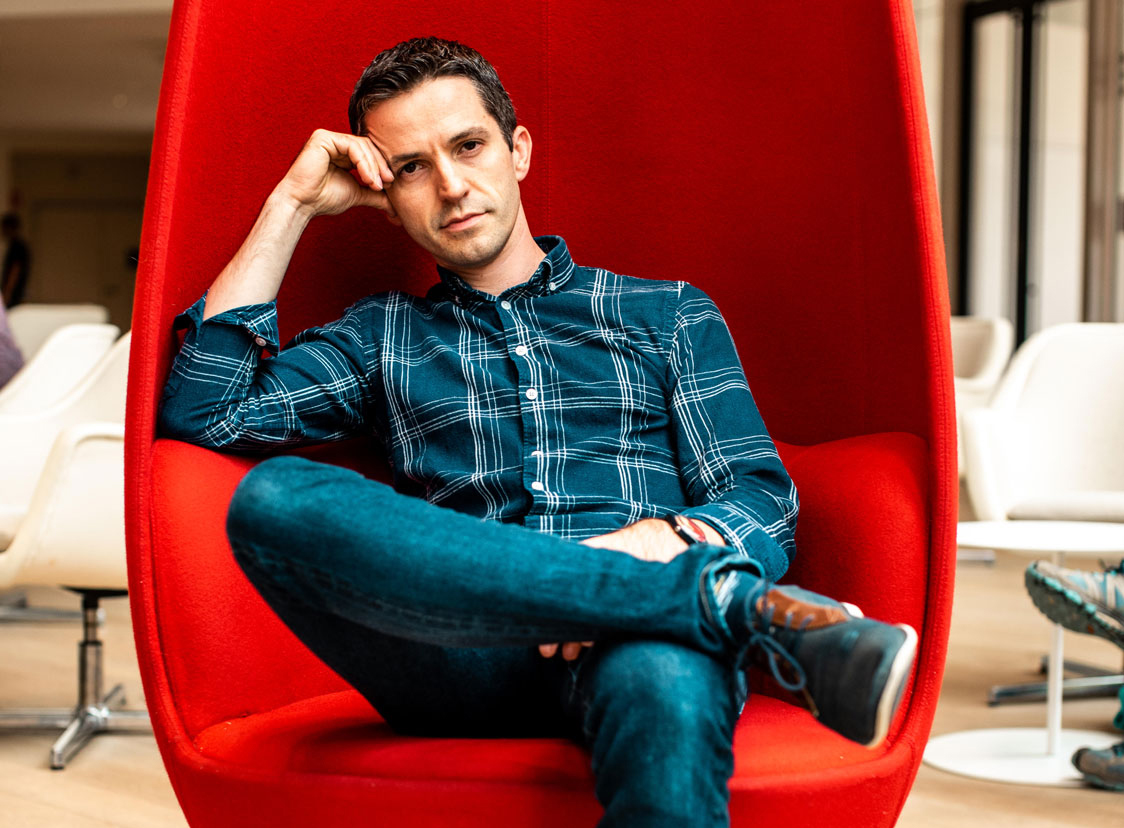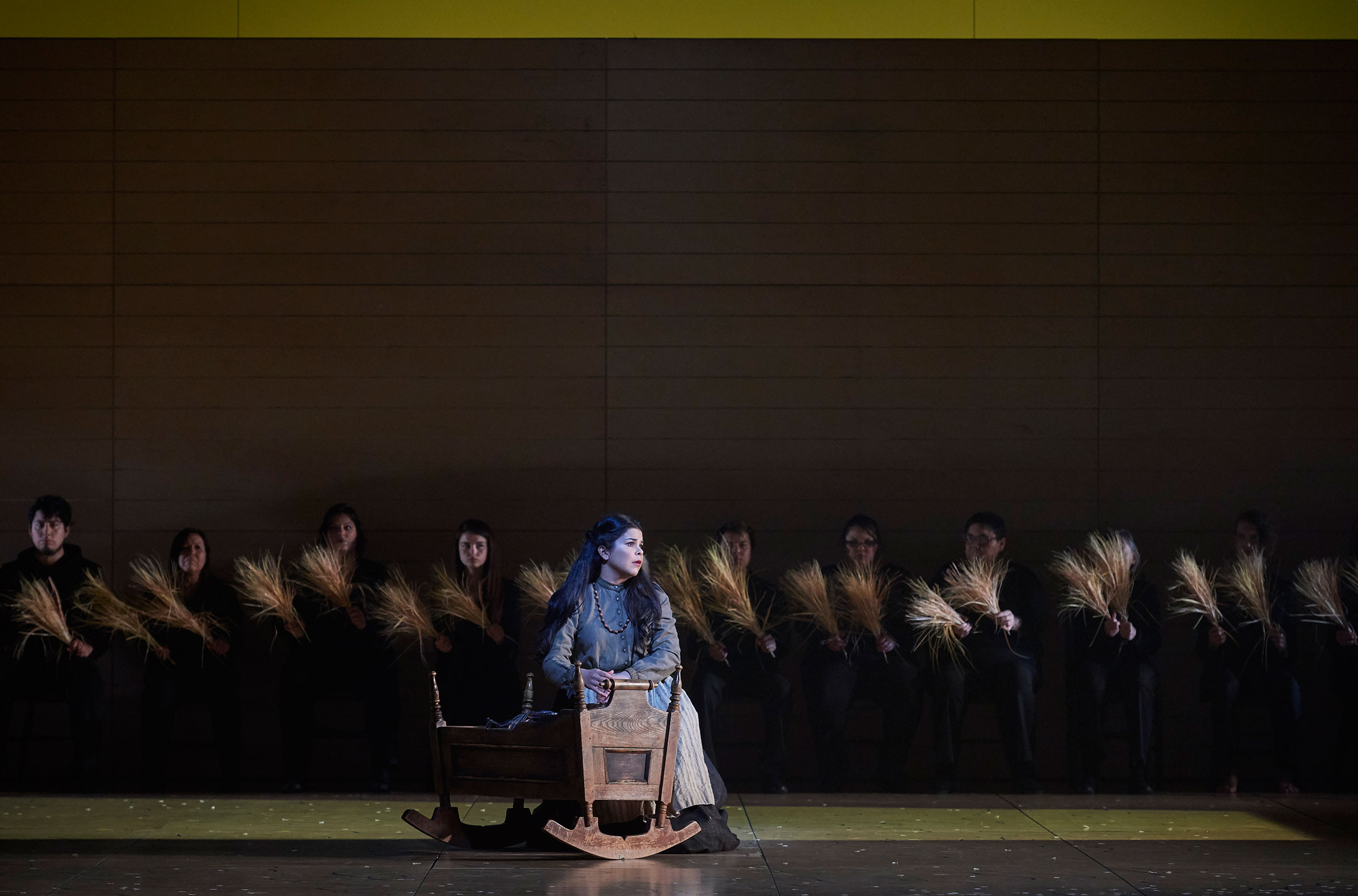-
Circle of Artists: Ian Cusson
By COC StaffPosted in Circle of ArtistsOver the next several months, the Canadian Opera Company will be highlighting members from our Circle of Artists initiative — an advisory body that is sparking conversation around institutional change at the COC and speaking directly to decision-makers to shape commitments that will support Indigenous communities with relationships based on reciprocity, caring, and mutual respect.
Circle of Artists: Spotlight on Composer Ian Cusson
Ian Cusson is a Métis and French-Canadian composer of art song, opera, and orchestral work. His work explores the Canadian Indigenous experience, including the history of the Métis people, the hybridity of mixed-racial identity, and the intersection of Western and Indigenous cultures. He is the inaugural artist of the COC’s newly developed Composer-in-Residence program, with a residency at the COC Academy.
In June 2019, Ian was commissioned by the COC and National Arts Centre to compose a new work to replace the music from the Kuyas aria that opens the third act of Louis Riel by composer Harry Somers and librettist Mavor Moore. This piece received its first public performance on September 19 at the National Arts Centre’s Southam Hall.
Q: How did you get involved with the Circle of Artists initiative at the Canadian Opera Company?
A: I was invited to the Circle of Artists around the time I accepted the commission for the new lullaby for the opera Louis Riel. This timing also coincided with the announcement of my two-year engagement as Composer-in-Residence for the Canadian Opera Company. It is truly an honour to be in the company of those in this circle.
Q: What kind of potential do you see the Circle of Artists as having, not only to change the COC but impact the arts sector more broadly in this country?
A: Organizations that are run by open-minded leaders benefit from a multiplicity of perspectives. As with any advisory group, success and impact depends upon the group’s ability to generate successful ideas, bring unique and valuable perspectives and the ability and willingness for those ideas to be implemented.
Bringing Indigenous voices into an organization like the COC has the potential to stretch its structures, decision making, and overall formation.
The image of the circle itself is a simple and powerful one. In a circle, there is no seat of prominence. An intern can sit next to an executive, and both have the opportunity to offer valuable insights. It’s my great hope that others in the arts sector will follow the Canadian Opera Company’s leadership in developing such models of creative listening, thinking and accountability.
Q: As you look ahead in your various projects and commitments, where do you draw inspiration from?
A: I draw greatest inspiration from people. Human beings are endlessly fascinating, and I try to maintain an open disposition towards everyone I meet, especially those who are different from me. As an opera composer, I will only ever be as successful as my ability to understand and empathize with people, and to convey in my work the nuance and richness of the human experience.
Q: What can you tell us about your new music for Louis Riel and how did it come about?
A: The decision to create new music for the opera Louis Riel came after almost two years of conversation and consultation between a number of parties including the COC, NAC, estate representatives of the original opera creators, the Nisga’a government, and Dylan Robinson, the professor who facilitated these discussions.
It was acknowledged that the original music for the scene was appropriated — used without the community’s permission, and its use in the context of the opera was in direct contradiction to Nisga’a law and protocol. It was agreed that the music for this scene of the opera should be removed. In order for the opera to be performed in the future without a musical hole in it, new music for the scene needed to be created.
This decision took time, sensitivity and patience. It required the difficult work of building trust between communities and the opening-up of space for healing where wrongs (even unintended) occurred. In a fast-paced world, this type of relationship-building, listening, and waiting is something of an oddity. But as is so often the case, important things take time.
Some people have told me that the decision to create new music for this opera is a ridiculous one, and balk at the concept of appropriation. I have been told on more than one occasion that a composer is within their rights to use any musical materials they so choose. After all, music is just a collection of sound waves, ordered by the pen of its genius-creator.
Whenever someone tells me this, I feel a deep sadness for them. The one thing they misunderstand about music is the most important thing. Music is more than a collection of sound waves. Music carries something beyond the sum of its parts: meaning. And meaning is what connects us across cultures, nations, languages and traditions. It is what makes music a great and dignified art.
It is meaning that allows us to see our very humanity. It is because music, like that which was used without permission in the original opera, has the capacity to carry meaning and be tied to the significant moments of life, ritual and the spiritual, that the mis-use of a melody is a problem worthy of correcting.
Q: What were the challenges of creating a new piece of music for an existing work, rather than something completely original? What was rewarding?
A: Creating new music for an opera that goes by the moniker “Canada’s greatest opera,” with its more than 50 years of scholarship and diverse public opinion, is more than a little daunting. Before writing anything, I asked myself some questions. Do I imitate the style of Harry Somers or use my own musical language? Do I quote other motivic material in the opera or create something wholly new and separate? Do I use a similar subsection of the orchestra (the original was scored for soprano, flute and a few percussion instruments) or do I employ larger forces that are available in the pit?
I spent time studying the score of the opera and familiarizing myself with Somers’ approach. In the end, I decided that the most important thing I could do was remain dramatically faithful to the needs of the scene by creating an emotionally engaged, tender moment, but not diverge from my own musical voice and wade into the waters of pastiche. The scene that opens Act 3 takes place in Montana. It is the calm-before-the-storm moment of the opera. Marguerite Riel sings her child to sleep. This moment is immediately followed by her husband’s decision to return to Canada and lead the rebellion that will end in his execution.
One of the great rewards of this project was having the chance to return to Mavor Moore’s original text for the scene that was unused in the original production. The words are evocative and filled with images of a mother’s hopes for her son. The text itself was the emotional entry point into the compositional work.
Q: How did it feel to have this work performed publicly for the first time?
A: Hearing this work performed for the first time, just as hearing any of my work performed is a very special thing. It is also strange. The work feels somehow separate from me—like I’m listening to a piece written by someone else and am hearing it with fresh ears with the rest of the people in the hall.
The most defining moment for me in any performance is that brief silence between the final note and the audience’s response. It is a very intimate space of emotional connection that everyone in the room shares. It is one of the most special moments to experience, and it is deeply meaningful to be able to create those moments for an audience.
Having the work premiere with the wonderful musicians of the National Arts Centre under Alexander Shelley is extremely special. I have a close relationship with this orchestra. I spent the past two years as a Carrefour composer with them and the result is that I know how they play. Many of them have become friends.
Having Métis soprano Melody Courage sing the part of Marguerite was very important for me. She is a wonderful artist, and sensitively breathed life into this music. There is no greater gift a composer could receive.
Q: What’s next as part of your composer residency in the COC Academy?
A: I am busy at work on an opera for young audiences with librettist Colleen Murphy that will be presented in the fall of 2020. While it is an opera for young audiences, it packs an emotional and sophisticated gut-punch that might send some adults reeling. (I’m not worried about the young people. They have a uniquely sophisticated ability to wade through the deep and the dark with a level-headedness and compassion that puts us adults to shame…)
Colleen is a true partner in crime. We have wicked fun together imagining operatic landscapes and creating weird and wonderful characters. She is a rare operatic partner, deeply committed to her craft, who can build a story like a brick outhouse.
Q: How do you see the COC Academy impacting the broader Canadian arts scene as an incubator for the future of opera?
A: The opportunity to live inside a major opera house, and work within this incredible ecosystem of young artists, staff and visiting artists is an opportunity second to none.
The COC Academy provides a space to take risks. The potential for failure is always a possibility in the work of art-making. Having a space for singers, instrumentalists, composers, librettists, dramaturgs, directors and conductors to push beyond what they think is possible in an environment that welcomes a certain degree of failure is invaluable for seeing the art form flourish and develop into whatever wonderful and unexpected future form it will take.
Did you miss our last Circle of Artists profile? Learn more about Cole Alvis here.
Photo credits: Ian Cusson, photo: John Arano; Simone Osborne as Marguerite Riel in Louis Riel (COC, 2017), photo: Michael Cooper; Ian Cusson in rehearsal at the National Arts Centre, photo: courtesy of Ian Cusson.
